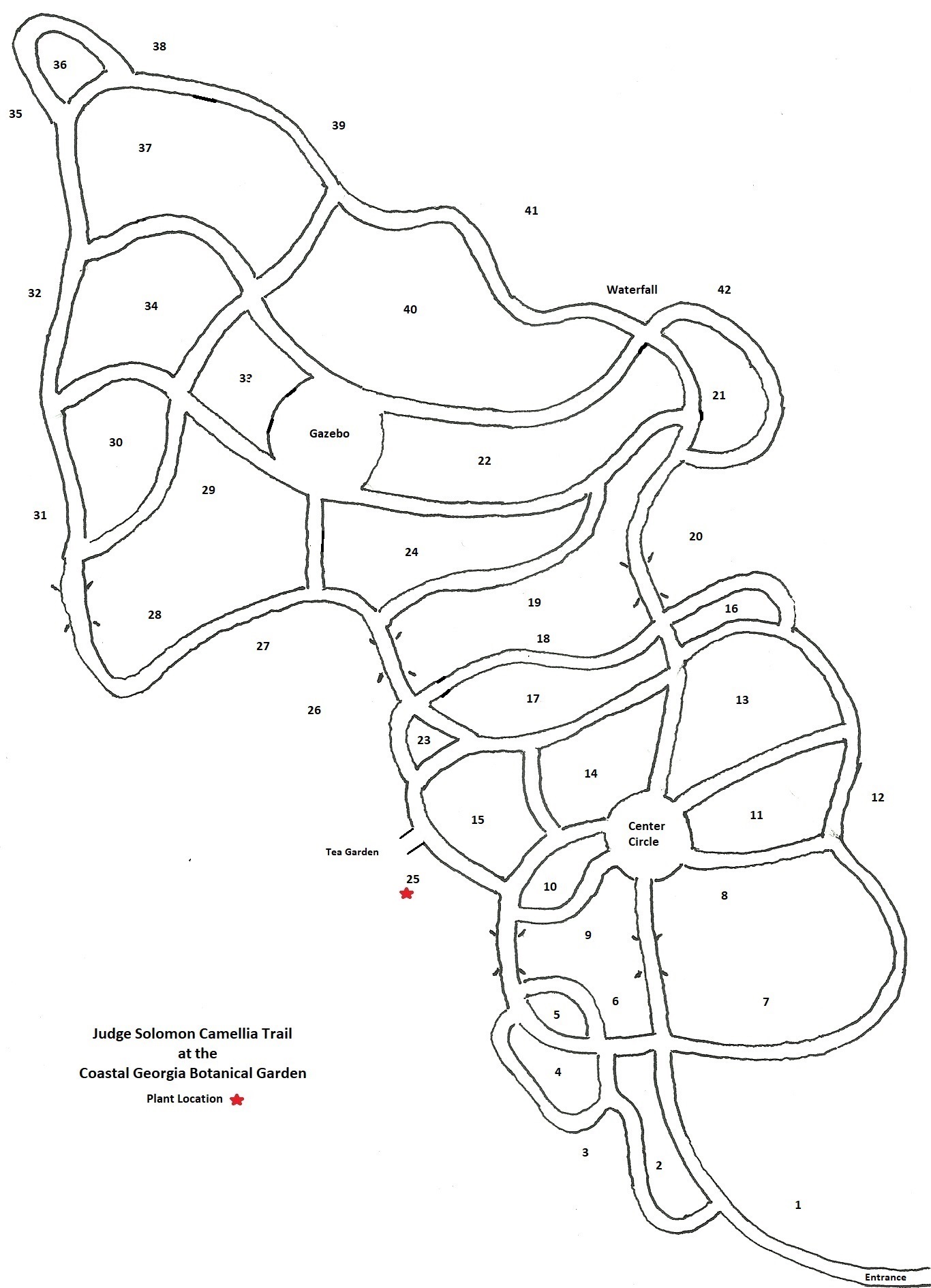Itō, Ihei, (Late 18th century), Hyakka Tsubaki Nayose Irotsuki; Pale
cherry pink, formal double, many petals arranged in order, beautiful
colour, medium size. See: Tuyama, 1968, Camellias of Japan, Appendix,
p.11. Iwasaki, 1828, Honzō Zufu. This flower has many pink petals.
Kasuya, Kamegorō, 1859, Tsubaki Irohanayose Irotsuki: Medium size,
formal double, pale pink, cup-shaped, blooms mid-winter. See: JCS, 1981,
Tsubaki, No.20, p.118 & ibid. 1968, No.7, p.24. Tuyama. 1966, Camellia
Cultivars of Japan, p.174; Tuyama, 1968, Camellias of Japan, pl.104,
p.52, description, p.117: Very common garden camellia, especially in
Kantō District. Leaves broadly elliptic, densely branched. Petioles a
little hairy. Flowers pink (Rose Madder 23/3), formal double, keeping a
bud centre for a considerable period. Size 6-7 cm across with about 60
petals. Flowers mid-season to late. The name ‘Otome’ has been used in
Japan for a group of small to medium sized formal double camellias so
that, to prevent ambiguity the names ‘Otome-tsubaki’ and ‘Usu-otome’
have been used as synonyms for this cultivar in Japan. It is also said
that the name ‘Otome’ means ‘stop’ in Japanese, implying that it was too
beautiful to sell or give away. Synonyms include: ‘Pink Perfection’,
‘Frau Minna Seidel’, ‘Lee E. Markley’, ‘Pink Pearl’, ‘Badgen’s Beauty’,
‘Burgdorf Beauty’, ‘Hime-otome’, ‘Momoiro-otome’, ‘Awa-otome’, ‘Virgin’.
Also the names ‘Goishi’ and ‘Otome Pink’ have been erroneously applied
to this Camellia. See: JCS., 1972, Encyclopedia of Camellias in Colour,
vol.I, pl.405, pp.170, 352. Seibundō Shinkōsha, 1979 Senchinshū, pp.29,
205 as ‘Otome-tsubaki’; Yokoyama & Kirino, 1989, Nihon no Chinka, p.390
as ‘Otome-tsubaki’; Katei Gatō, ed., 1984, Chabana Koyomi, vol.1,
Tsubaki. Yokoyama & Kirino, 1989, Nihon no Chinka, p.390 as
‘Otome-tsubaki’; Katei Gatō, ed., 1984, Chabana Koyomi, vol.1, Tsubaki.
Amongst its awards are “The William E. Wylam Miniature Award” for 1982
and the “National Hall of Fame Award” for 1978 as ‘Pink Perfection’, and
the ‘Award of Merit’ by the RHS, 1950 as ‘Pink Pearl’. Chinese synonyms:
‘Fenshi Shimei’, ‘Kwongtungfen’, ‘Kwangtongfen’, ‘Quangchoufen’,
‘Xiaotaohong’, ‘Yuchun’. Note; Chinese Camellia Culture 2003, p.216, and
Camellias, Y.C. Shen, 2009, p.190, state that cultivar traces back to
the Ming Dynasty.
|
|

